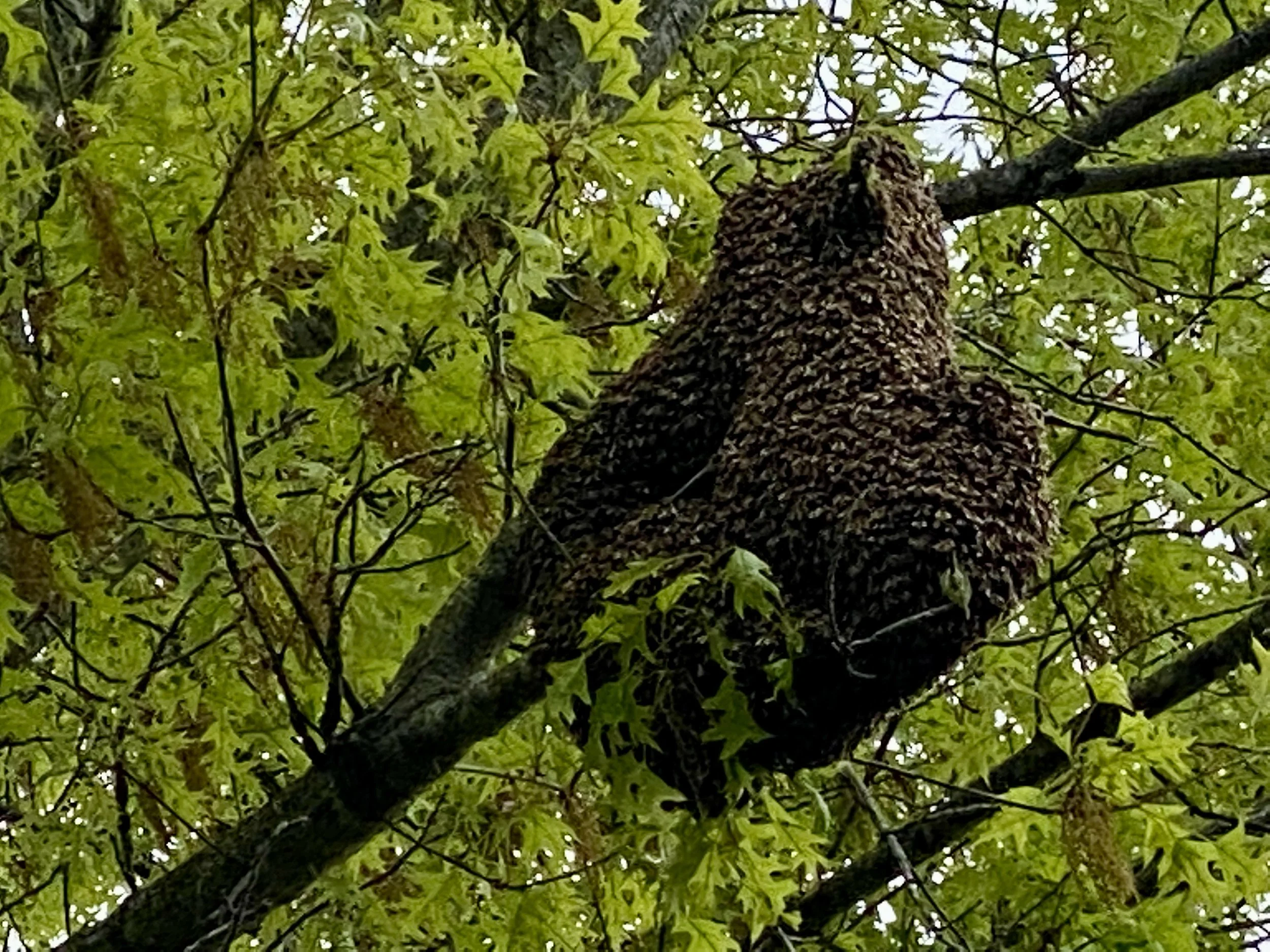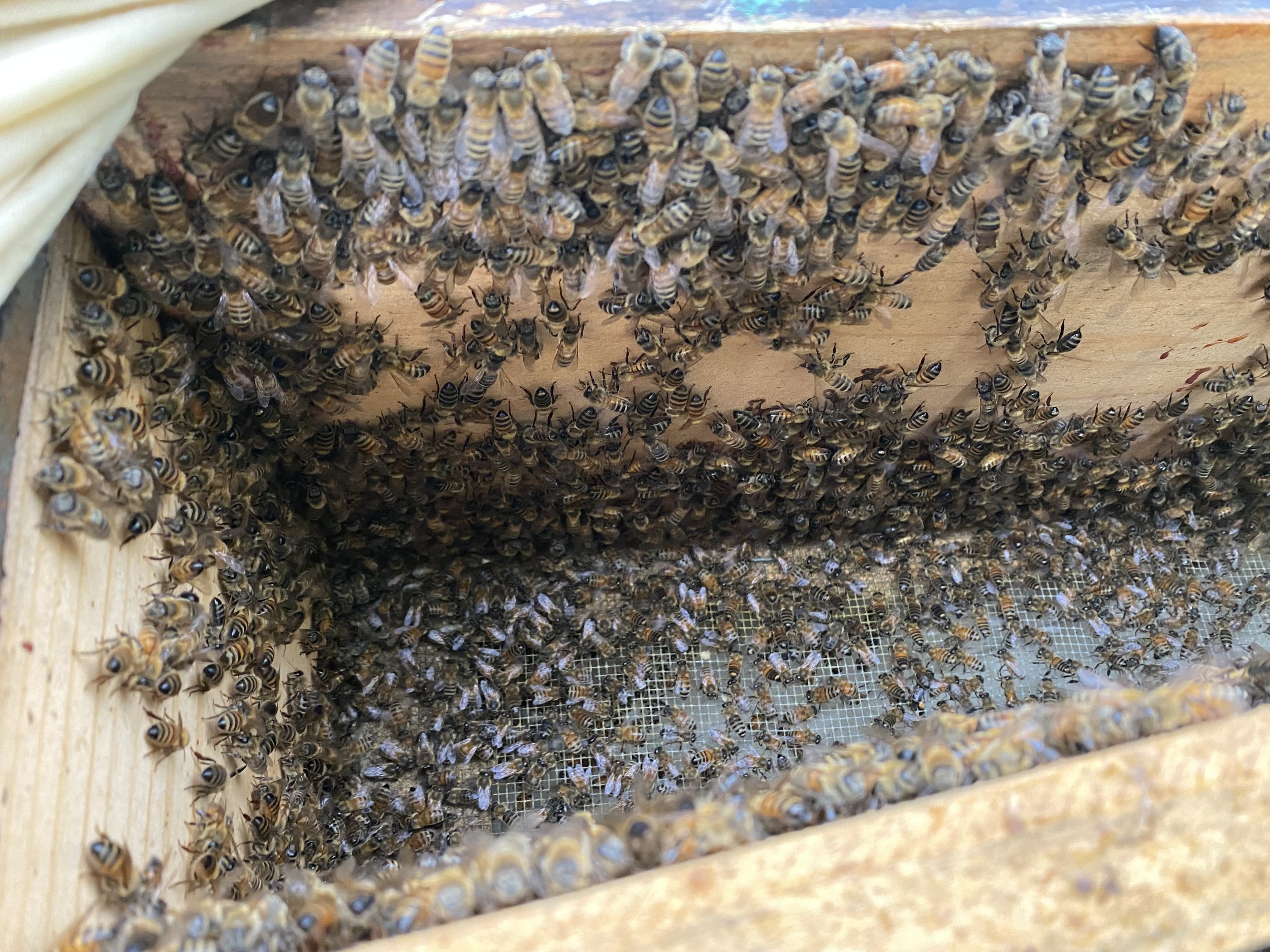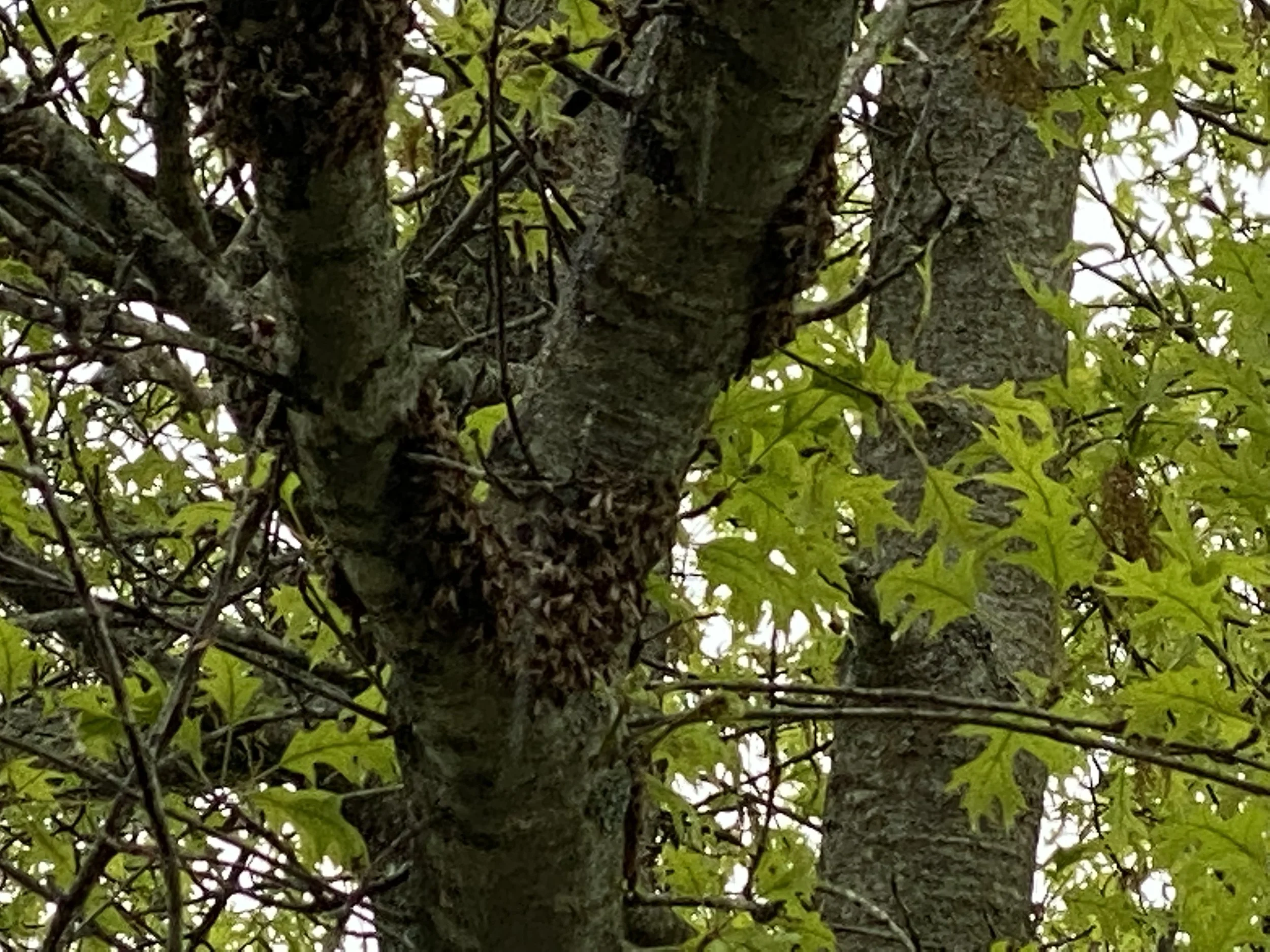First Swarm of Season
/Bees swarming hang from a tree waiting for scout bees to find a new home. (Charlotte Ekker Wiggins photo)
First Swarm of Season
According to Missouri Department of Conservation, Mother’s Day weekend is usually the average start of Missouri’s honey bee swarming season. For the last few years, the bees have been ahead of schedule. This year is no exception.
For the first swarm of this season, I joined my bee buddy David Draker to catch a swarm from one of his colonies. To his credit the bees swarmed because he was out of state on vacation or he would have managed their hive space needs.
White sheet helps to see bees, especially the queen. (Charlotte Ekker Wiggins photo)
Bees swarm to ensure their reproduction. They basically separate the mother colony to get new colonies established. In the first swarm, they leave because they are out of laying room for the queen. It’s not a decision they make lightly. They have to slim down the old queen so she can fly with the rest of the bees and they have to raise a new queen they leave behind to keep the colony going. The first swarm queen is usually a mated, established queen. If there are other “after swarms,” those queens are unmated.
Also in the first swarm, usually the old queen leaves with the traveling bees, leaving at least one daughter behind. If for some reason the old queen can’t fly, a daughter will leave with the swarm.
Wouldn’t you know it, this swarm decided to leave in the middle of a thunderstorm and ended up a good 15 feet off the ground in a tree.
To get swarms in trees, David and I have used water cooler jugs we tape to a “long arm” extending pole. A white sheet around the hive box helps spot the queen once they are added to the box.
Here’s a short video of the first scooping of the bees out of the tree. Once David had them in the jug, he lowered the arm for me to catch and guide the bees into the hive. And yes, you will see lighting. We didn’t realize it was lightening until we saw this video. Note to new beekeepers: not a good idea to be wielding a metal pole when it’s lightening.
Once inside the hive, bees get attracted to the frame with wax comb. (Charlotte Ekker Wiggins photo)
Once they land in the hive, it helps to have frames with wax comb to entice them to stay.
If weather conditions had been better, we would have sprayed the wax frames with sugar water as another enticement. And maybe snuck a frame of open brood - baby bee eggs - to get the attention of the traveling nurse bees.
But it was raining - and apparently lightening - so we settled for getting the majority of the bees in the hive and would check on them the next day.
Not all bees make it into the water cooler jug bucket. (Charlotte Ekker Wiggins photo)
An estimated 50% of bees don’t stay once they are caught. Another 50% don’t make it through their first winter in a hive so maintaining a swarm can be a challenge.
In this case, the bees must have had a new better place they wanted to be and didn’t stay.
Good practice, though. The swarm season is just starting!















